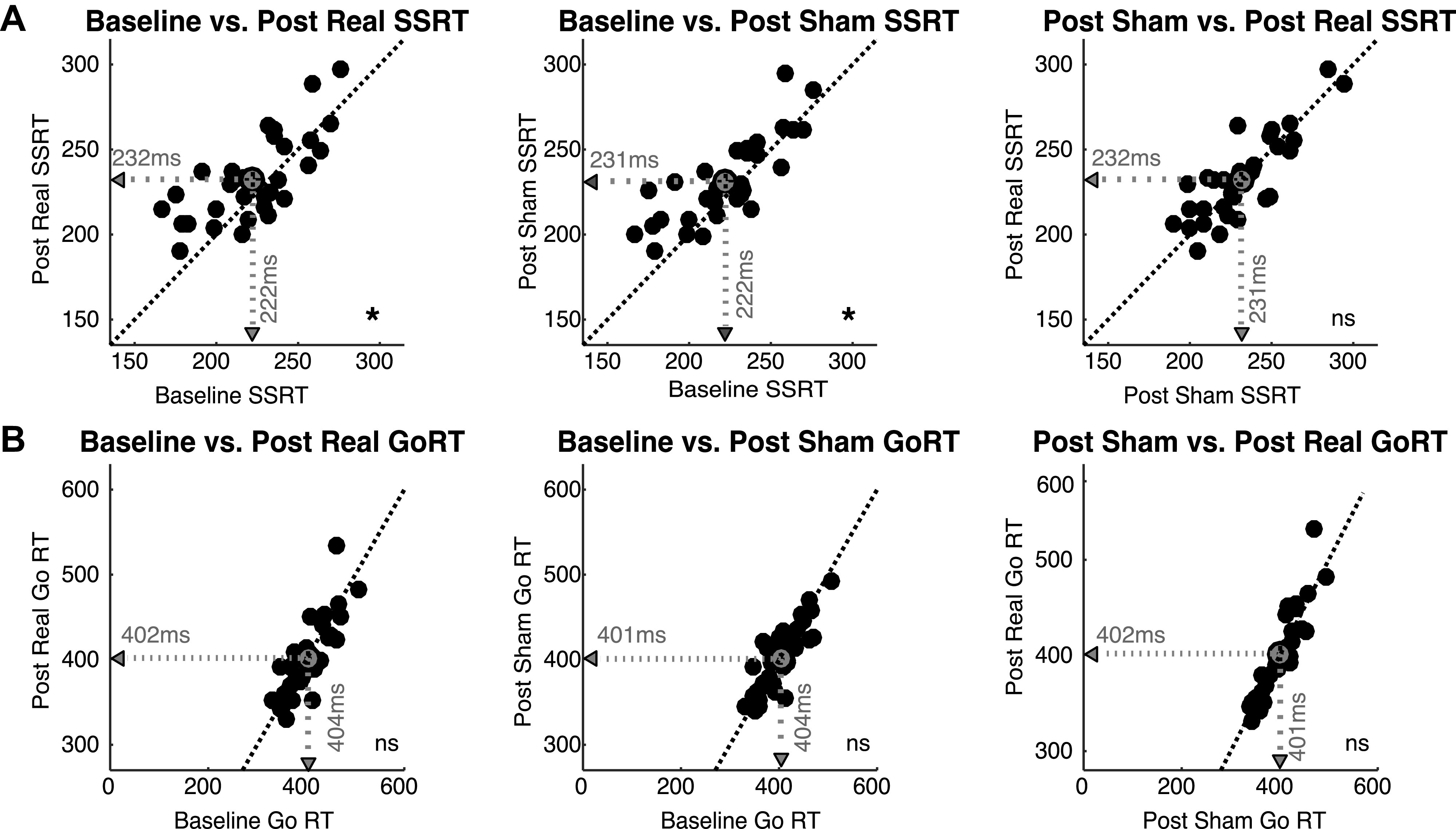Figure 3.

Effect of real vs. sham transcranial magnetic stimulation (TMS) on Stopping and Going. A: the change in stop signal reaction time (SSRT) across task sessions. After real TMS, SSRT is lengthened relative to baseline, but SSRT is also lengthened after sham TMS relative to baseline. There is no difference in SSRT following real vs. sham TMS. B: Go response times (RTs) plotted for each task session. Neither real nor sham TMS affected Go RT relative to baseline. *P < 0.05; ns, Not significant.
